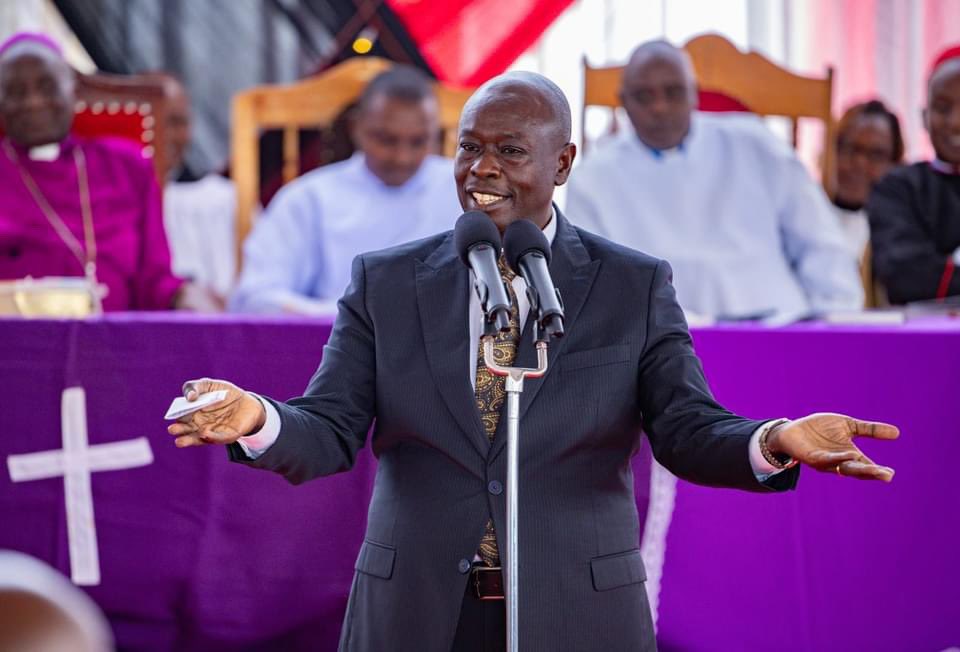Nairobi – The political landscape in Kenya is currently simmering with tension as Deputy President Rigathi Gachagua faces a potential impeachment. Several underlying reasons are driving this move, each adding layers of complexity to the unfolding political drama.
1. Scapegoat for Gen Z Protests
Gachagua is being positioned as the fall guy for the recent Gen Z demonstrations. Despite there being no evidence of his having direct involvement, his critics claim that his “shareholder” politics have incited anger and division among Kenyans. This narrative frames him as the catalyst for the country’s current unrest, making him an easy target for political retribution.
2. Fence-Sitting During Protests
During the height of the protests, Gachagua’s ambiguous stance—appearing to support both the youth and the government—has not gone unnoticed. President William Ruto reportedly views this fence-sitting as a sign of disloyalty, further fueling the desire to remove him from his position.
3. Changing the Narrative
Impeaching Gachagua could shift the political narrative significantly. Central Kenya’s reaction to his ouster could isolate the region, turning the issue from a Gen Z movement to a broader ethnic conflict. This strategic isolation could transform the political landscape into a Kikuyus vs. Kenyans scenario, a divisive one-against-42 dynamic.
4. Kikuyu-Somali Tensions
Gachagua’s earlier attempts to push for the resignation of NIS Boss Noordin Haji, a prominent Somali figure, have stoked ethnic tensions. The Somali community, which holds considerable influence with the President, perceives Gachagua as a threat. This ethnic dimension adds another layer to the impeachment push, reflecting the intricate power dynamics at play.
5. Strategic Realignment for 2027
Looking ahead to the 2027 elections, Gachagua’s impeachment could facilitate a significant political realignment. If the ODM nominates a successor, it could smooth Ruto’s path to re-election by appeasing Raila Odinga and his supporters. Sacrificing Gachagua might be seen as a necessary step for Ruto to maintain political stability and govern effectively.
Governor Kahiga’s Defense
Amidst the impeachment chatter, Nyeri Governor Mutahi Kahiga has emerged as a vocal defender of Gachagua. Kahiga dismissed the impeachment efforts as baseless and praised Gachagua for opposing the Finance Bill, which was unpopular among Kenyans. He emphasized that Mt. Kenya leaders would not support such a motion and expressed confidence that President Ruto would avoid this divisive path.
The impeachment saga surrounding Deputy President Rigathi Gachagua is a multifaceted political maneuver. With elements of scapegoating, ethnic tensions, and strategic realignments at play, the outcome of this power struggle will have significant implications for Kenya’s political future. As the situation develops, all eyes remain on President Ruto and the potential repercussions of this high-stakes political gambit.
news about Kenya, Breaking news, Rigathi Gachagu, Muahi Kahiga, William Samoei Ruto, Raila Odinga, ODM Party, coalition UDA, Impeachment, 2027 elections, Gema, Mount Kenya region, national unity, 1 against 42, Cabinet, Gen Z protests, Finance Bill 2024, Uhuru Kenyatta, Rigathi Gachagua impeachment, Gen Z unrest in Kenya, ethnic tensions in Kenyan politics, Kikuyu-Somali power struggle, Deputy President fence-sitting, Nyeri Governor Mutahi Kahiga defense, Kenya political showdown, high-stakes political chess game, Gachagua political division accusations, Kenyan Deputy President impeachment, political drama in Kenya, Gachagua scapegoat narrative, Kikuyu vs. Kenyans conflict, William Ruto political strategy, 2027 election realignment.
